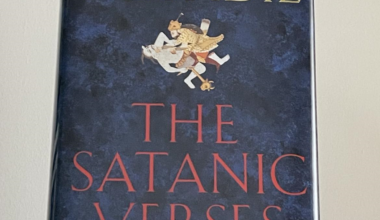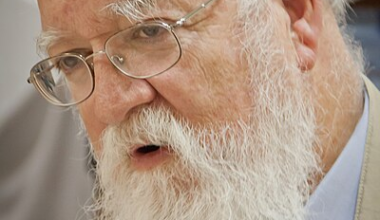
Burma is known for its rich cultural heritage: full of golden pagodas, insight meditation, and charming people. But it is also known for its long history of civil war, political strife, and military dictatorship. After the pro-democracy 1988 Uprising against the dictatorship, which had been in power since 1962, Aung San Suu Kyi became a national hero. But her victory in the 1990 election was ignored by the regime, which arrested Suu Kyi and continued to rule the country as a totalitarian state. Following the 2010 general election, the military junta gave way to a liberalising, quasi-civilian government, and in 2015 Suu Kyi’s party came to power. Yet again, however, democracy was short-lived. Though her reputation was marred by the Rohingya genocide, Suu Kyi’s party won the 2020 election—only for the Burmese military (Tatmadaw) to oust her and reinstate military dictatorship in 2021. Throughout Burma’s long and troubled history, an ideology known as political Buddhism has played a significant, and often malign, role.1

U Nu, who became the first prime minister of Burma after it gained its independence in 1948, used to hold a position of syncretism between Marxism and Buddhism. But he moved away from Marxism towards a form of political Buddhism, perhaps to enhance his populist appeal at this politically complicated time. Burma was home to many ethnic groups, but it was predominantly Buddhist, so this was a logical move on his part. It allowed him to bring an ethnically diverse country together as a ‘moral community’ to defend Buddhist teachings and values in the emerging post-colonial world, dominated as that world was by the Cold War between the secular capitalist West and the atheist communist East.
In 1954, U Nu hosted the Sixth Buddhist Council in Yangon. He maintained that his Buddhism-based modernisation methods and objectives were superior to those of the capitalist and communist models, since they combined material progress with spiritual rejuvenation, whereas capitalism promoted the profit motive above all and communism was materialistic and led to violence and dictatorship. U Nu became more and more critical of the Marxian evolutionary view of social development. In January 1958, he delivered a lengthy speech to the Anti-Fascist People’s Freedom League in which he categorically rejected Marxism. In 1961, he declared Buddhism the state religion. By transforming Buddhism into a political ideology, U Nu sowed the seeds of the dangerous populist ideology that would become known as political Buddhism.
Burma’s first era of civilian government came to an end in 1962 when General Ne Win overthrew U Nu and installed a military junta, the Union Revolutionary Council (URC). The URC’s philosophical framework was called the ‘Burmese Way to Socialism’ and emphasised self-sustainability and socialism, though it might be better described as isolationist and nationalistic. Later, the URC established a political party called the Burma Socialist Programme Party (BSPP), which became Burma’s ruling—and only legal—political party under the junta. The introduction of the Burmese Way to Socialism badly impacted Burma’s economy, living conditions, and educational attainment.
In 2007, thousands of Buddhist monks led the ‘Saffron Revolution’ against the dictatorship. This movement spread quickly throughout the whole nation and included peasants, workers, students, and monks. As usual, the military government brutally suppressed the protests, but they had no choice but to accept the organising capabilities of the Buddhist monks as a social class. So, the Tatmadaw tried their best to assert their influence over the monks, making an effort to recruit and organise them. In short, the threat posed by the monks to the established order meant that the monks had to be co-opted.
In the 2010s, Thein Sein, a former general and the president of Burma between 2011 and 2016, met with the influential monk Dhammaduta Chekinda to discuss how to win the support of the Burmese monks, particularly those who had participated in the Saffron Revolution. Following his conversation with Chekinda, Thein Sein’s government began to promote ultranationalism and political Buddhism and Chekinda approached some of the leaders of the Saffron Revolution. Although this had limited results, a seed had been planted within the community of Buddhist monks.
The Buddhist monk Ashin Wirathu was once a prisoner and opponent of the military dictatorship. But he is best known, as Times magazine put it in 2013, as ‘The Face of Buddhist Terror’. He is a major figure in the political Buddhist, nationalist, and anti-Muslim 969 Movement. In 2012, in Rakhine State, violence broke out between ethnic Rakhine Buddhists and Rohingya Muslims, and the hatred spawned by the conflict soon spread to the rest of the country, with Muslims across Burma being targeted. Ashin Wirathu supported Thein Sein’s plans to send the Rohingya Muslims to another country, has called for restrictions on marriages between Buddhists and Muslims, and has advocated nationwide boycotts of Muslim businesses.
Many of the monks who supported democracy and the Saffron Revolution and who opposed the military dictatorship changed their minds after the 2021 coup. To them, the military government is a bulwark against Islam and Christianity; the surest way of protecting Buddhist purity. Even when the working, peasant, student, and capitalist classes united against the military junta in favour of federal democracy, the Buddhist monk class stuck by the government. Only a small fringe of Buddhist monks took part in the opposition to the 2021 coup, despite their prominence in opposition movements in the past.
Other monks who have joined the reactionary, sectarian political Buddhism movement include the late Venerable Maha Bodhi Myaing, who met with Ashin Wirathu to discuss how best to safeguard Buddhism against other religions. Venerable Thabarwa Ottamasara gave his support to the military after the 2021 coup, saying that the Tatmadaw’s success was due to ‘the power of the Buddha Dhamma Sangha’. He is the abbot of a meditation centre built on land provided by a retired military officer, which might explain his cosying up to the military. Venerable Sitagu Nyanissara even offered the military backup from the monks if necessary.
Summing up, political Buddhism is a populist ideology emphasising Burma’s Buddhist identity at the expense of everything else. It can be traced back to U Nu’s time, if not earlier, and it reemerged after 2012. Many influential monks are supporters of the military dictatorship that re-took control in 2021 and are complicit in the genocide against the Rohingyas. Burmese political Buddhism appears to be entirely at odds with both heterodox Western Buddhism and the genuine teachings of Buddhism. It preceded the military dictatorship and is just as dangerous as it is. Political Buddhism, with its nationalism and sectarianism, may thus endure even in the event of the junta’s demise. In short, dictatorship and religion mean that lasting democratic change in Burma is still a long way off.
- I use ‘Burma’ rather than ‘Myanmar’ because the former is better known and the change to ‘Myanmar’ was one instituted by the military dictatorship in 1989, a year after the pro-democracy uprising was crushed. ‘Burma’ is thus much preferred by the grassroots. ↩︎









Your email address will not be published. Comments are subject to our Community Guidelines. Required fields are marked *
Donate